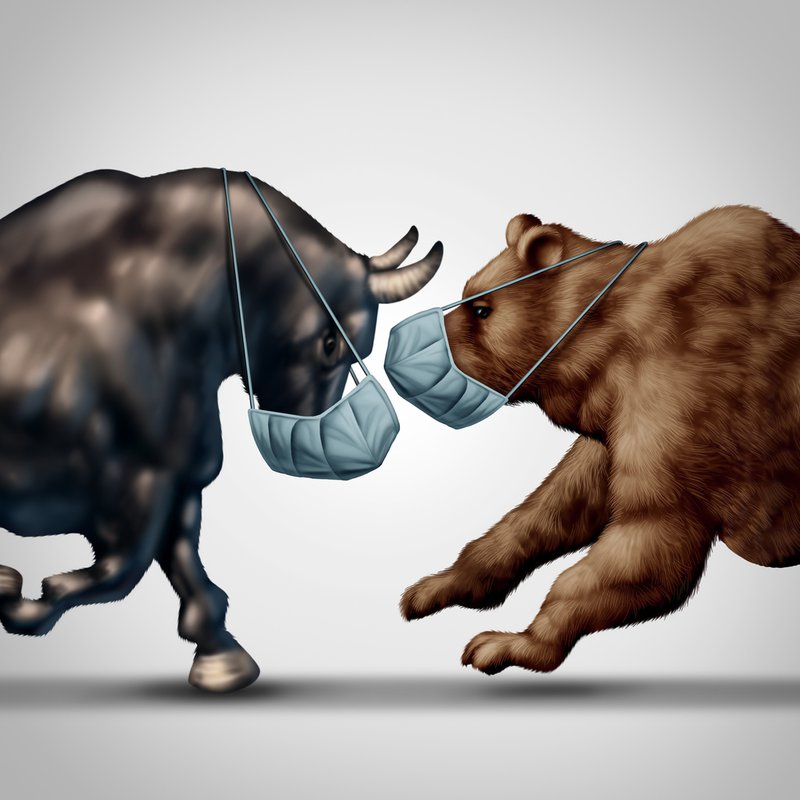
Ian McGugan
March 11, 2020
When pandemic scare stories dominate social media, and stock markets ricochet from panic to optimism, what should a rational investor do?
Here are four helpful thoughts to keep in mind. They can help maintain your sanity as the latest news blows your emotions one way or the other.
PANICS ARE MORE COMMON THAN YOU THINK
Surely you must remember the great market crash of Oct. 27, 1997, when the Dow Jones Industrial Average plummeted 7 per cent because of panic over the developing Asian financial crisis?
Probably not. As it turned out, North American markets bounced back in short order.
Such mini-panics are more common than most people realize, according to John Huber, who runs Saber Capital Management LLC. Memories of many downturns fade quickly, Mr. Huber wrote in a note.

Even die-hard market followers may have to think twice to recall the plunges that accompanied the collapse of hedge fund Long-Term Capital in 1998, the SARS epidemic in 2003, the Flash Crash in 2010, the U.S. debt-ceiling standoff of 2011 and the rising interest rates panic of late 2018.
Few people remember any of these mini-panics because they did not develop into full-blown recessions. No one knows how the current crisis will evolve. But we should all take a deep breath and remind ourselves that a bad patch in the stock market does not necessarily portend greater economic woes.
EXPECT A MIXED DIET OF NEWS
There are huge unknowns around the novel coronavirus outbreak. Investors should respect those uncertainties. However, they should also resist the temptation to dwell only on the worst possible cases.
Contrary to what you may think, good news about the coronavirus is on the rise, writes Eric Lascelles, chief economist at RBC Global Asset Management. China, for instance, has made remarkable progress in slowing the spread of the disease. On Monday, it reported just 45 new cases in the nation of 1.4 billion. From all official indications, the Asian giant has managed to control its virus outbreak – granted, at big economic cost.
Some skeptics doubt China’s numbers, but a similar trend appears to be unfolding in South Korea. The outbreak there “peaked at over 800 new cases per day, but is now down to less than 400 daily and steadily falling,” Mr. Lascelles says.
FOCUS ON THE LONG TERM
Bans on public gatherings, school closures, shuttered offices and a boom in telecommuting could all be outcomes of the virus outbreak in North America. These measures, if instituted, will punch a hole in economic output for as long as they last – probably, not more than a month or so.
However, none of them will affect the long-term ability of the economy to produce goods and services.
The virus’s long-run impact on gross domestic product will be trifling in both North America and around the world, according to Morningstar researchers Karen Anderson and Preston Caldwell. They expect the virus outbreak to take a 1.5-per-cent toll on global economic output in 2020, but foresee just a 0.2-per-cent hit in following years, once the outbreak comes under control.
“Damage to productive capacity will be small, plus economic confidence should quickly return once the virus subsides,” they wrote in a report published Tuesday.
THERE IS NO OBVIOUS RIGHT MOVE
It is easy for pessimists to see the wild ups and downs on Bay Street and Wall Street as omens of a new financial crisis. Unlike the 2008 crisis, however, the current turmoil isn’t about exotic financial products blowing up or obscure corners of the financial markets grinding to a halt.
Today’s chaos is about a clear and present danger – a medical emergency of unknown severity but probably limited in duration. That should make it at least somewhat easier for policymakers and financial markets to address.
It should also make it easier for investors to gauge. Aswath Damodaran, a professor at New York University and an expert on valuation, has a helpful spreadsheet on his website, Musings on Markets, which lets readers play with various assumptions and see how they affect the fair value of the S&P 500.
Prof. Damodaran’s own baseline assumptions start with a virus-induced 10-per-cent drop in corporate earnings this year – a figure roughly in line with what has occurred in many past U.S. recessions. He then assumes half this year’s decline will be made up in subsequent years as the economy reverts to normalcy.
Based on that, he figures the S&P 500 should be trading at 2,889 today – practically spot on the 2,882.23 where it closed on Tuesday.
In a broader sense, his spreadsheet suggests today’s market is neither a screaming bargain nor irrationally expensive. Rather than betting big on either outcome, investors may want to ponder the benefits of doing nothing.
This Globe and Mail article was legally licensed by AdvisorStream.
© Copyright 2025 The Globe and Mail Inc. All rights reserved.






